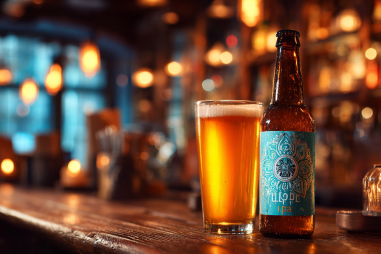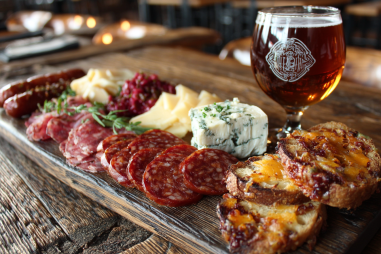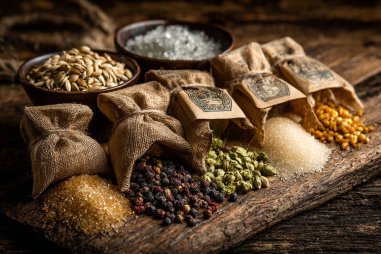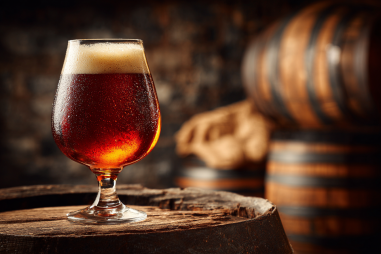The craft beer movement has brought about a renaissance for many classic beer styles, and cream ale is no exception. Once a popular staple of American brewing, cream ale had largely fallen by the wayside in favor of hoppier and bolder brews. However, thanks to the creativity and passion of craft breweries dedicated to rediscovery, cream ale is seeing a fresh wave of popularity. These breweries are breathing new life into the style, blending tradition with innovation to create approachable yet exciting beers. Let’s take a closer look at the craft breweries leading the revival of cream ale, what sets their versions apart, and how this mellow-style beer is evolving in today’s diverse craft beer scene.
Introduction to Cream Ale’s Craft Revival
Cream ale is a uniquely American beer style that emerged in the 19th century. Originally brewed in the Midwest and Northeast, cream ale was designed to be a crisp, light-bodied beer that could compete with lagers for summer refreshment. Characterized by its pale to medium gold color, moderate carbonation, and a smooth, clean finish, cream ale typically features a subtle malt sweetness balanced by gentle hop bitterness.
Despite its early popularity, cream ale faded in prominence as lagers dominated the market and as craft beer trends moved toward more intense flavors and higher IBUs. Recently, craft brewers looking to revive lesser-known styles have turned their attention back to cream ale. This revival has been fueled by consumer interest in sessionable, easy-drinking beers with a quality twist—qualities cream ales naturally possess.
Profiles of Leading Cream Ale Brewers
Several craft breweries have distinguished themselves as champions of the cream ale renaissance. Each brings its own approach, flavor profile, and regional character to the style.
- Bell’s Brewery (Kalamazoo, Michigan): Often credited with helping to sustain interest in cream ales, Bell’s famous Oberon Ale, although a wheat ale, inspired their Cream Ale which features a smooth malt profile complemented by subtle hop notes.
- Anchor Brewing Company (San Francisco, California): Anchor’s Cream Ale is a nod to the style’s history on the West Coast. Their version has a slightly fruitier, balanced profile and is highly regarded for its clean finish.
- Rogue Ales (Newport, Oregon): Rogue crafts a variety of innovative beers, and their Hazelnut Cream Ale combines the smoothness of the base style with a unique nutty flavor derived from toasted hazelnuts, highlighting regional ingredients.
- New Glarus Brewing Company (New Glarus, Wisconsin): Famous for its clean and crisp beers, New Glarus’ Cream Ale features soft malt flavors with subtle citrus hop notes, embodying Midwestern brewing traditions.
- Great Lakes Brewing Company (Cleveland, Ohio): Their Dortmunder Gold Lager is often compared to cream ale for its balance and drinkability, but their specific Cream Ale offering emphasizes a silky texture and restrained hop character.
Regional Influences on Cream Ale Production
One of the most fascinating aspects of the cream ale resurgence is how regional terroir and local brewing culture shape each brewery’s rendition. In the Midwest, traditional brewing techniques and local ingredients like corn or adjunct grains remain common, resulting in cream ales with a soft malt backbone and restrained hop presence. Breweries in the Northeast often feature a slightly fruitier hop or malt character influenced by the proximity to historic ale styles.
The West Coast breweries tend to experiment with innovative hop varieties and adjuncts, emphasizing bright aromatics while maintaining the clean finish cream ales are known for. Some Pacific Northwest brewers, in particular, add local ingredients—such as hazelnuts or Pacific Northwest-grown hops—which impart a unique regional flavor.
Innovative Twists on the Classic Style
As craft breweries embrace cream ale, many use the classic style as a canvas for creativity. Here are some of the innovative approaches seen in today’s cream ales:
- Fruit and Nut Adjuncts: As with Rogue’s hazelnut cream ale, some breweries infuse nuts, fruits, or spices to complement the beer’s natural sweetness without overpowering the style’s delicate balance.
- Kettle Additions: Adding hops late in the boil or dry hopping brings a more pronounced hop aroma and flavor while preserving cream ale’s signature smoothness.
- Hybrid Styles: Some brewers blend cream ale with elements of other styles, such as incorporating wheat malt for a creamier texture or blending with pale ale characteristics for a slight bitterness.
- Sour and Barrel-Aged Variants: Though rarer, a few adventurous brewers are experimenting with barrel aging or souring techniques to add complexity to the clean base of cream ale, creating a fusion style that surprises and delights.
How Craft Breweries Market Cream Ale
Marketing cream ale in today’s craft beer environment requires balancing respect for tradition with contemporary appeal. Most breweries position cream ale as a sessionable, easy-drinking beer perfect for casual occasions. They lean into its versatility and nostalgic charm, often highlighting the history and craftsmanship behind the style.
Packaging for cream ales often reflects this approach—labels might feature vintage fonts, illustrations reminiscent of the early 20th century, or local cultural references. At the same time, breweries use social media and tasting events to educate consumers about cream ale’s unique profile and encourage them to try this refreshed classic.
Because cream ale is lighter on hop bitterness, marketing efforts often emphasize food pairing versatility and relaxed drinking experiences, appealing to both veteran beer enthusiasts and newcomers seeking approachable options.
Where to Find Top Cream Ales
Thanks to the growing interest in cream ales, they are increasingly available across the United States and in many parts of the world. Here are some ways to track down excellent cream ales:
- Local Craft Breweries: Many craft breweries now offer seasonal or year-round cream ales. Checking brewery taprooms is a great way to sample fresh batches and learn about the brewery’s take on the style.
- Specialty Beer Stores: Well-stocked bottle shops or craft beer retailers often carry regional cream ales. Look for breweries known for reviving traditional styles.
- Craft Beer Festivals: Festivals dedicated to craft beer often showcase a wide array of styles, including cream ales. These events provide opportunities to taste multiple versions side by side.
- Online Retailers: Some online craft beer shops offer nationwide shipping for craft beers that are difficult to find locally, expanding access to rare cream ale releases.
When searching for the best cream ales, remember that their delicate hop profile and smooth malt character shine brightest fresh. Whenever possible, seek out local or freshly canned versions for the finest experience.
The Future of Cream Ale in Craft Beer
Cream ale’s revival is an exciting chapter in American craft brewing. It provides a bridge between tradition and innovation, offering brewers a versatile platform for experimentation while delivering drinkers smooth, refreshing beers perfect for any occasion. As more breweries embrace and reinterpret the style, we can expect to see an increasing variety of cream ales that range from faithfully traditional to creatively bold.
With consumer tastes evolving toward balanced, flavorful, yet sessionable beers, cream ale is well positioned to become a staple in the craft beer repertoire once more. The movement championed by dedicated craft breweries continues to raise awareness and appreciation, ensuring cream ale’s lasting place on beer menus and in the hearts of beer lovers everywhere.







